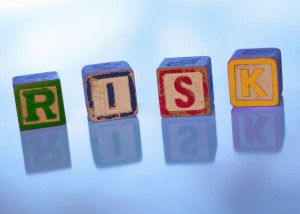
Risky Business
The toughest challenge in any new process is taking the first step. Once you have started the work, you can build momentum to carry forward. Let’s consider how to get started with business continuity planning. First and foremost, you must consider human safety. Begin by considering plans to ensure the safety of your employees and their families in the event of a disruption to your normal operations. Do you have basic safety measures at your place of work? Can you put together an evacuation plan that you will implement on a moment’s notice if called to leave your workplace?
This process is important for many reasons, including the opportunity to secure buy-in from your employees to contribute to what they may perceive as an increase in their responsibilities. Share with them the thinking and methodology behind the planning process and how applying this approach in their homes can enhance the safety of their households and extended families. Engage all of the stakeholders in your company in the planning process, such as your suppliers, your neighbors, your service providers and others in your community. The ability of your company to stay up and running in a disaster is dependent, in part, of the ability of others to perform their responsibilities even in challenging and unexpected circumstances.
Next, start to assess the key assets of your business. This is not as easy as it first appears and the results of this process may trigger some surprising insights that can position your business for even greater success. Here is an example from my own experience: a neighboring business won a $25 million contract to do app development for a financial data provider. When their building burned to the ground, they were able to safely evacuate all of their people and insurance covered the cost of replacing their computers and furniture.
But the key asset of this business was not its physical property; it was the intellectual property – the hundreds of thousands of lines of software code that its developers and programmers had written for the financial client. They had failed to back up their code offsite and so lost everything.
This is an important insight because in a service and knowledge economy, our most important assets are often intangible, such as intellectual property or even reputation for stellar customer service. So begin by identifying those assets and how you might protect them.
Then it is time to perform due diligence on your own company and closely examine your own processes and procedures. You need to develop operational manuals to document what you do to systematize your processes. Even the most experienced pilots develop checklists as, in stressful conditions, it is too easy to overlook a critical procedure. As you consider your work processes, you will inevitably discover ways to improve upon them. More importantly, putting formal procedures and systems in place will help to scale and grow the business – and reduce the level of demands made upon the business owner with the stress that accompanies those demands.
I will be sharing these and other approaches to small business risk resilience in an interactive webinar offered by Datto’s and scheduled for February 4, 2015 at 2:00 p.m. EST. To register for the webinar, please click here. Upon registration, you will receive a “Risk IQ Test” to see if your framework properly estimates the risks to which small businesses are exposed! We will begin our webinar by sharing our findings and conclude our webinar with resources for follow-up support and a blueprint that small businesses can use to begin simple measures to protect their businesses. I hope you will join us!




